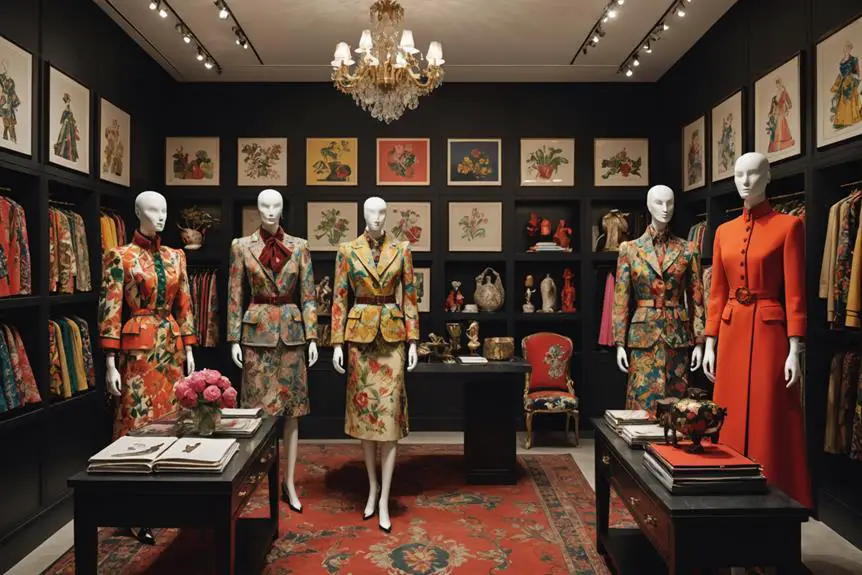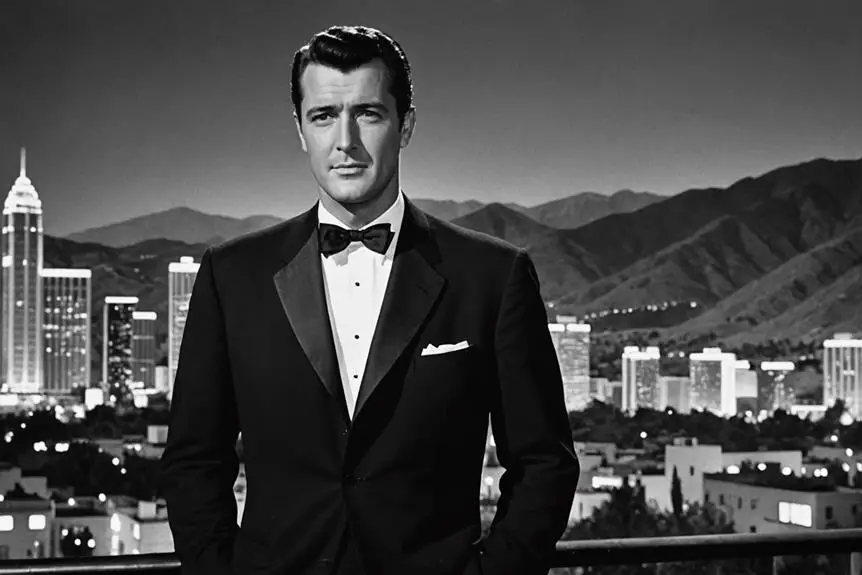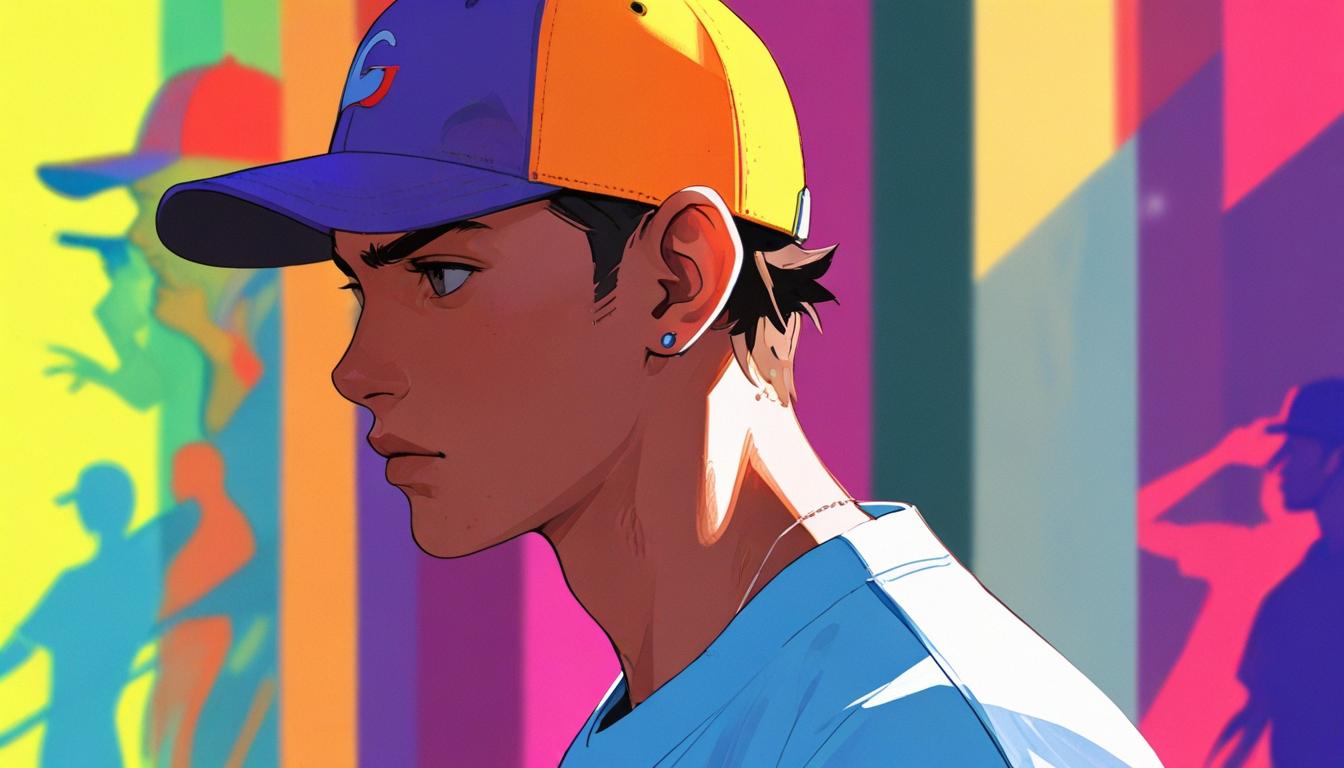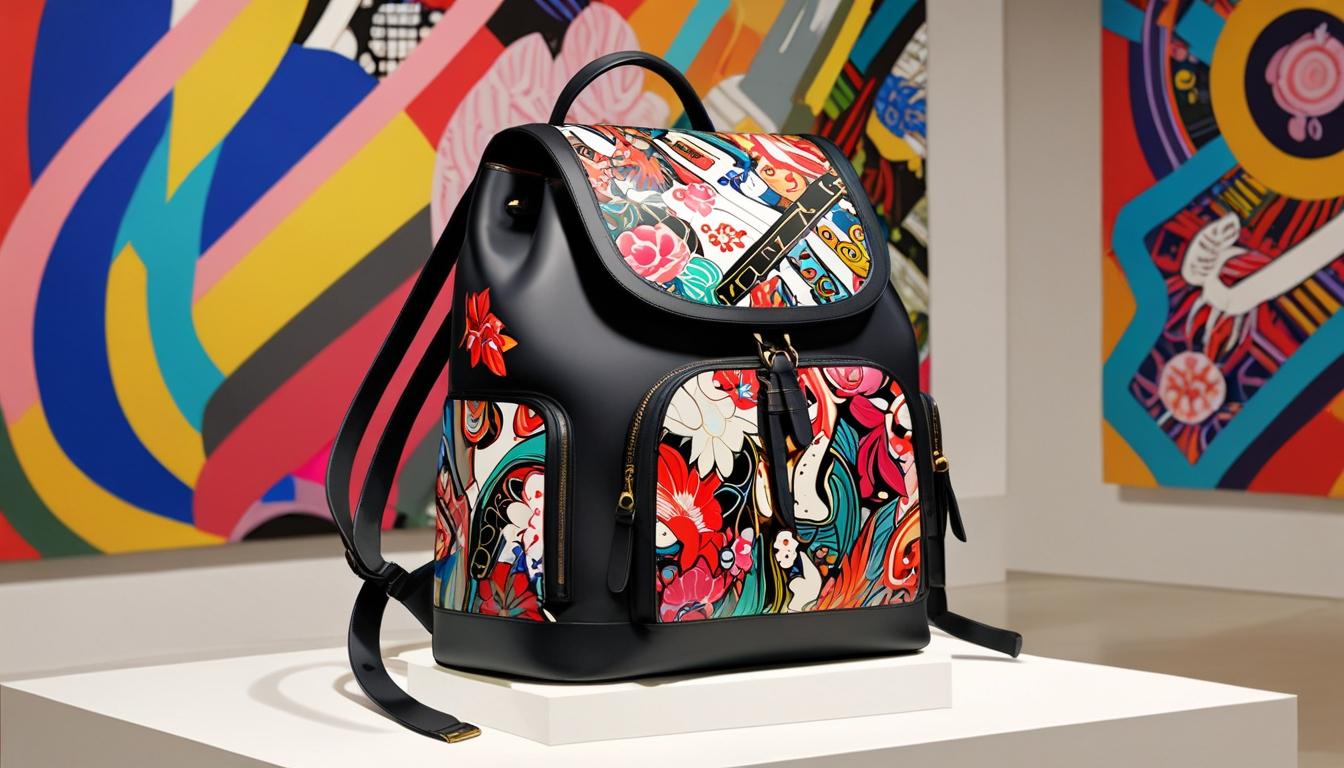The designers behind the House of Gucci play an essential role in bringing the story's glamor to life. Led by production designer Arthur Max and set designer Letizia Santucci, they crafted stunning sets reflecting the evolution of fashion from 1975 to 1995. Iconic character designs, like Lady Gaga's portrayal of Patrizia Reggiani, capture the essence of '80s ambition. Each set piece, from the luxurious Gucci flagship boutique to opulent homes, enhances the film's themes of ambition and betrayal. As you explore their work, you'll uncover the intricate details that shape this compelling narrative.
House of Gucci Overview
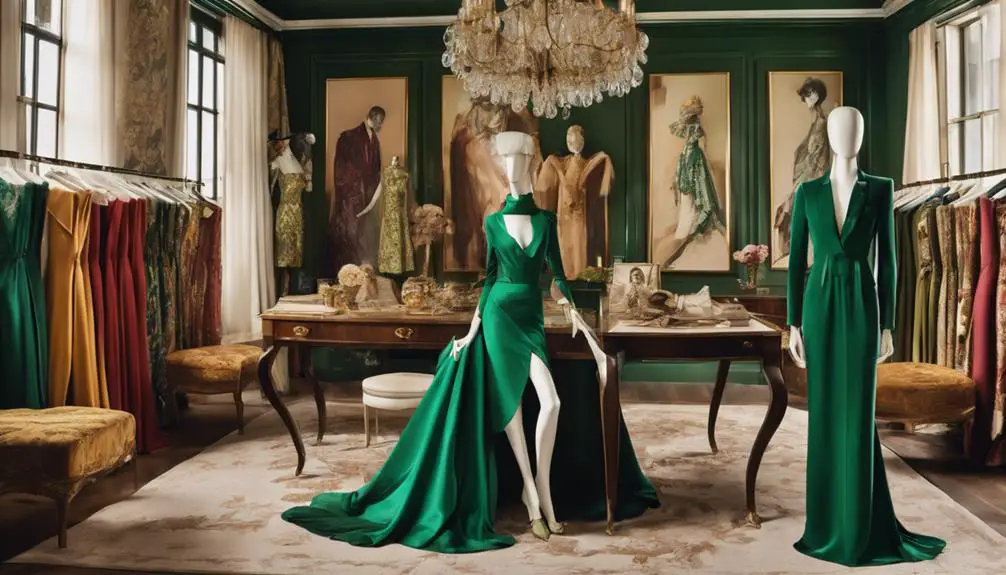
If you're intrigued by the world of high fashion and family drama, "House of Gucci" offers a fascinating glimpse into the tumultuous saga of the Gucci family. Directed by Ridley Scott, this film is an adaptation of Sara Gay Forden's book and dives deep into the complex relationship between Patrizia Reggiani and Maurizio Gucci.
It's a true story that showcases not just their romance, but the incredible ambition that led to betrayal and conflict within the iconic luxury brand.
Set against the backdrop of wealth and power struggles, the film highlights how the Gucci family's grip on their fashion empire gradually slipped away. Patrizia, played by Lady Gaga, is depicted as a strong-willed woman who stops at nothing to secure her place in the world of high fashion.
In contrast, Maurizio, portrayed by Adam Driver, finds himself torn between love for his wife and loyalty to his family's legacy.
The film features a star-studded cast, including Jared Leto, Jeremy Irons, Salma Hayek, and Al Pacino, each adding depth to this gripping narrative.
While the production design team, led by Arthur Max and Letizia Santucci, meticulously recreates the lavish settings of the Gucci family's life, it's the story of ambition and betrayal that truly captivates.
"House of Gucci" isn't just about fashion; it's about the dark side of desire and the lengths one will go to achieve their dreams.
Production Design Team
The production design team for *House of Gucci* plays a pivotal role in bringing the film's lavish world to life. Led by production designer Arthur Max and set designer Letizia Santucci, they collaborated closely to create an authentic aesthetic that spans two decades, from 1975 to 1995. This timeframe captures the evolution of fashion and lifestyle, showcasing how the Gucci brand transformed over the years.
Filming took place in stunning Italian sites, including iconic Gucci stores, elegant villas, and chic chalets. Most of the primary shooting occurred in Italy and Cinecittà, Rome, where the team meticulously crafted each setting. For example, Rodolfo Gucci's residence was modeled after the exquisite Villa Necchi Campiglio, while Aldo Gucci's home was recreated at the beautiful Villa Balbiano. These choices reflect the film's dedication to portraying the timeless elegance of Italian style.
The production design team didn't shy away from incorporating lavish details, either. From luxurious automobiles to intricate set designs, they captured the high fashion of the period, ensuring every scene felt authentic and immersive.
Iconic Character Designs
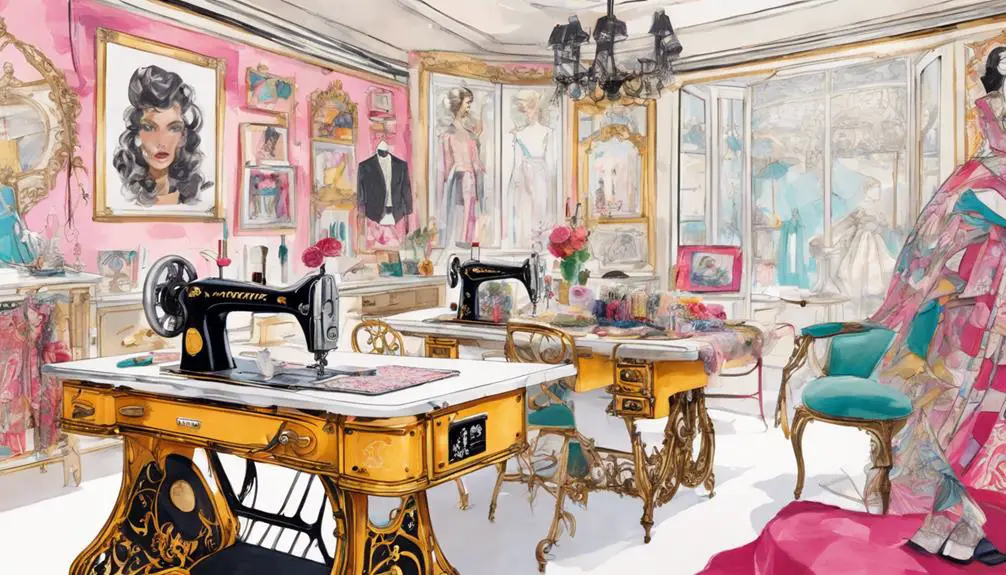
In *House of Gucci*, iconic character designs play a crucial role in illustrating the personalities and social standings of the Gucci family. Lady Gaga, portraying Patrizia Reggiani, embodies a blend of elegance and ambition, with her wardrobe reflecting 1980s glam that aligns with the opulence of Villa Polisena, the home she shares with Adam Driver's Maurizio Gucci. Their luxurious lifestyle is captured through their carefully curated outfits, showcasing their rise in the fashion hierarchy and reflecting the brand's evolution over decades, as seen in the evolution of Gucci logos.
The contrasting designs of other characters highlight their distinct identities. For instance, Rodolfo Gucci's character is inspired by Villa Necchi Campiglio, where his nostalgic and brooding nature is mirrored in tailored suits and classic styles.
On the other hand, Aldo Gucci, portrayed by a vibrant figure, resides in Villa Balbiano, where the baroque frescoes and antique-filled interiors echo his larger-than-life persona.
Paolo Gucci, the creative disruptor, is seen in a renovated Trastevere warehouse, showcasing an eclectic style that reflects his chaotic artistic vision. His studio is a nod to his Pop Art influences, reminiscent of artists like Lichtenstein and Warhol, blending creativity with family legacy.
Designer Tom Ford's influence is evident throughout, as he masterfully captures the essence of each character. From lavish parties to intimate family moments, the character designs in *House of Gucci* not only enhance the visual storytelling but also deepen our understanding of the complex relationships within the iconic fashion dynasty.
Set Elements and Style
Set elements and style in *House of Gucci* vividly transport viewers into the opulent world of the Gucci family, showcasing a meticulous attention to detail that spans two decades.
Production designer Arthur Max and set designer Letizia Santucci masterfully crafted environments that reflect the luxurious lifestyle synonymous with the famous fashion house. One standout location is the recreation of the Gucci flagship boutique on Rome's Via Condotti. Designed with dark woods and archival handbags, it evokes an old-world charm that immerses you in the era of high fashion.
Patrizia's New York apartment adds a contemporary twist, filled with vibrant Pop Art pieces from renowned artists like Lichtenstein and Warhol. This modern aesthetic perfectly captures the spirit of the late '80s and early '90s, showcasing a glamorous lifestyle that many aspire to.
You can't help but be captivated by the ultra-luxury automobiles featured in the film, like the Lamborghini Diablo and a vintage Mercedes, which further emphasize the allure of wealth and style.
Additionally, Aldo Gucci's residence, recreated at Villa Balbiano, impresses with its baroque frescoes and opulent decor. These elements underscore the film's themes of power and prestige within the Gucci family dynamic.
Each set tells a story, enveloping you in the grandeur and complexity of their lives, making it impossible to look away.
Visual Impact and Themes
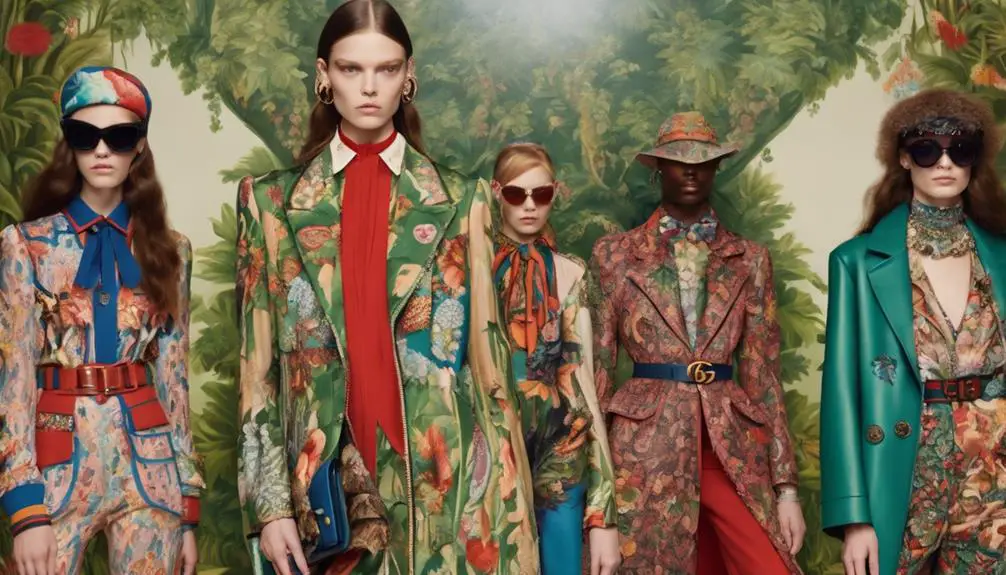
Immersed in a visual feast, *House of Gucci* captivates with its opulent set designs that reflect the extravagant lifestyle of the Gucci family. The film's visual storytelling transports you through a 20-year period, from 1975 to 1995, showcasing meticulously recreated locations, including historic villas and the flagship boutique on Rome's Via Condotti.
Each set piece, from Patrizia's New York apartment adorned with vibrant Pop Art to iconic nightlife venues like Studio 54, embodies the era's aesthetic beauty and highlights the themes of wealth and fashion.
As you explore the scenes, you'll notice how the opulent set designs evoke timeless elegance. The lavish interiors, paired with luxury automobiles, enhance the film's portrayal of high fashion while diving deep into the complexities of Gucci family dynamics.
The production team brilliantly uses color, texture, and lighting to create a world that feels both glamorous and tragically poignant. These visual elements don't just serve as backdrops; they tell a story of ambition, betrayal, and the relentless pursuit of status.
Each frame captures the allure and chaos of the Gucci family's life, illustrating how wealth can twist relationships. The aesthetic beauty of the film intertwines with its powerful narrative, reminding you that behind the glitz lies a deeper exploration of human desires.
In the end, *House of Gucci* isn't just about fashion—it's a vivid portrayal of life, love, and the costs of ambition.
